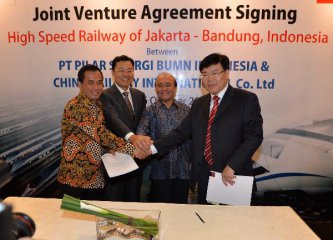
China’s GDP data for the third quarter will be unveiled next week. Multiple parties predict that the year-on-year growth of China’s GDP in the third quarter will range from 6.8 to 6.9 percent, lower than the expected annual growth of 7 percent. The pressure on stabilizing growth continues to increase in the fourth quarter and more macro-control policies might be introduced later.
Most institutions believe that the year-on-year growth of China’s GDP in the third quarter will be lower than 7 percent. Su Jian, deputy head of the economics institute at Peking University, told the journalist of the Economic Information Daily that weak domestic and oversea demand hardly provides enough support to the economy. Though recently the RMB credit slightly picks up and the growth of money supply maintains a relatively high level, the negative impact brought by passive monetary easing and RMB devaluation might impede monetary finance’s support to the real economy.
Considering current economic trend and monetary policy environment, it is expected that the whole economy will continue to grow at a low level in the short run. The GDP growth rate in the third quarter might be around 6.9 percent, slightly below the figure in the second quarter. It is possible that the People’s Bank of China (PBOC) might cut the interest rates and the reserved requirement ratio (RRR) again if the real economy shows poor performance.
Niu Bokun, chief of the macro-strategy study of Hua Chuang Securities Co., Ltd., predicts that the year-on-year growth of GDP in the third quarter will record 6.9 percent. The main reason behind the drop of growth lies in the sluggish real economy. Relatively low economic growth always comes along with the transformation of industrial structure.
Under the impact of factors including holidays, the investment in industrial production and fixed-asset might drop a little in Sept. It’s possible that the year-on-year growth of industrial added-value might drop below 6 percent. “But we don’t think the finance industry is the main factor dragging down the GDP in the third quarter. Though the trading volume of the stock market suffered big quarter-on-quarter plunge in the third quarter, it still sees a year-on-year growth of 200 percent”, said Niu.
Zhou Jingtong, a senior analyst with Bank of China Ltd.’s International Finance Institute, told the journalist of the Economic Information Daily that both the economy and finance slow down since the third quarter. On the one hand, indicators of real economy including investment, export and industrial production are slowing down compared with that of the second quarter. On the other hand, the stock market suffered several large adjustments since mid-June. The pull effect of finance industry to the economy is largely weakened compared with the first half. Therefore, the GDP growth in the third quarter, not likely to reach 7 percent, might record around 6.8 percent and sees slight drop compared with that of the second quarter.
Along with the continuous pressure of economic downturn, China will gradually make a sprint to stabilize economic growth after the National Day holiday. The PBOC announced pilot re-loan of credit asset pledge on Oct. 10. After approving the highway and railway projects with investment amount over 400 billion yuan in September, the National Development and Reform Commission (NDRC) again gave an official approval on 13 projects concerning railway, highway and other aspects with a total investment amount of 368,871 million yuan, which was released on its official website on Oct. 13 and 15.
The NDRC secretary general Li Pumin addressed on Oct. 15 that the NDRC, relevant departments, China Development Bank, Agricultural Development Bank of China and the local development and reform commissions would set up targeted construction funds through issuing bonds so as to directly inject project capitals and support construction of major fields which are promising with returns and won’t bring new excess production capacity.
At present, the first batch of the targeted construction funds have been put into place and the second batch is being released, which play a crucial role in supplementing project capitals and enhancing local investment capability and significantly arouse the investment enthusiasm of banks, local governments and project undertakers.
Experts point out that with the insufficient local financial revenue and the financing difficulty and high financing cost of local projects, capitals from the state’s targeted construction funds boast low cost and long deadline. This has eased the capital shortage of local governments, effectively accelerated promotion of major projects, maintained growth of fix-asset investment, boosted project investment and facilitated local economic and social development.
Translated by Jennifer Lu and Vanessa Chen






















Latest comments